You’ll find Antelope Canyon both surprisingly intimate and dramatically vast, a place where light sculpts sandstone into ribbons of color and shadow. With access controlled by Navajo guides, you’ll need to plan logistics, pick the section that fits your abilities, and time your visit for the best light. There’s practical know-how you’ll want before you go—from permits and cameras to nearby stops—that’ll make the whole experience smoother and more rewarding.
What Makes Antelope Canyon Unique
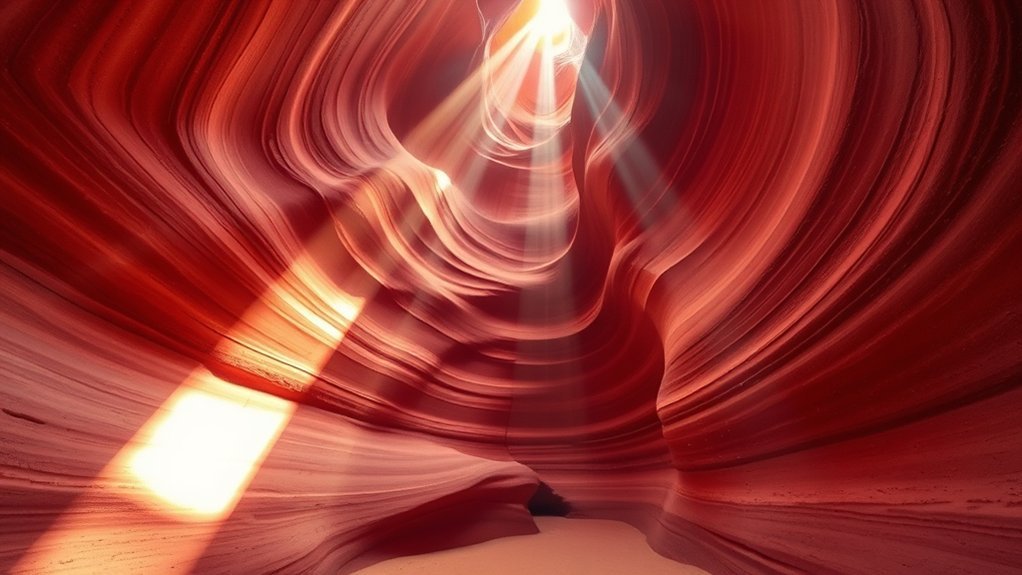
One look down a narrow slit of Navajo Sandstone and you’ll see why Antelope Canyon feels otherworldly: flash floods and relentless erosion carved sinuous walls, V-shaped chutes, and sweeping curves over thousands of years, producing vivid bands of red, orange, and purple that shift with the light. You’ll notice Upper Antelope Canyon’s airy chambers where mid-day beams spotlight swirling colors, while Lower Antelope Canyon challenges you with ladders, narrow passages, and a pronounced V-shape that reveals different textures. As a slot canyon formed on Navajo land, it’s both geological wonder and sacred place, so you’ll join guided photography tours run by Navajo operators. The result is breathtaking beauty and a dreamlike setting that pulls photographers and nature lovers in.
Planning Your Trip and Getting There
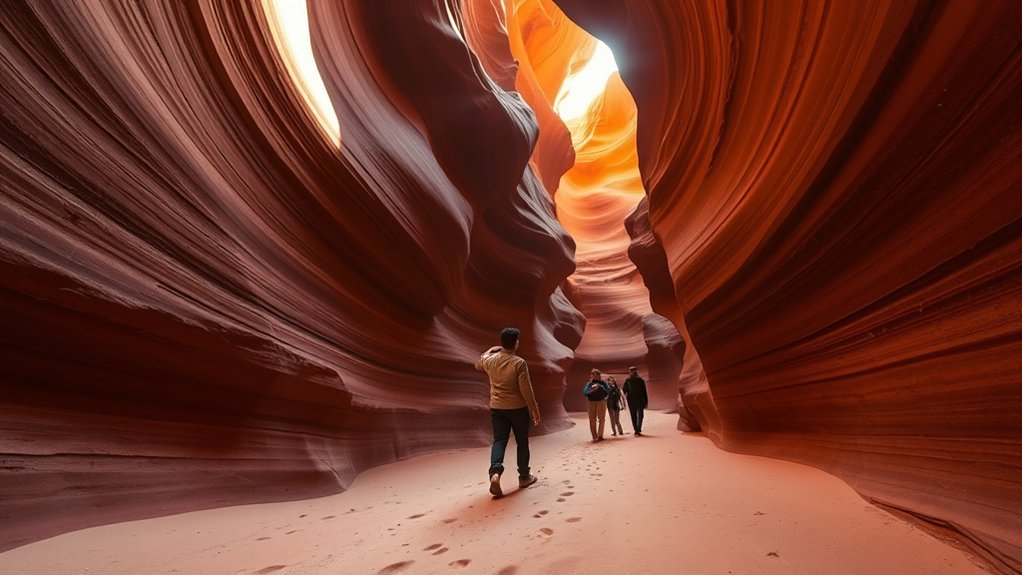
Because Antelope Canyon sits just east of Page, AZ, planning your trip starts with timing and reservations: you’ll reach the canyon in about 10 minutes from Page (roughly a 4½-hour drive from Phoenix), but you can’t enter without booking a tour with an authorized Navajo guide—permits are usually bundled into the tour price—so arrive at least 15 minutes early for a visit that typically lasts up to two hours, and book well in advance during the busy March–October season when both Upper (more accessible) and Lower (stairs and ladders) fill quickly. Choose reputable Antelope Canyon Tours or local tour operators that operate on Navajo Nation land. Expect shuttle pickup from the parking lot, clear pre-tour instructions, and a Guided Tour paced for photography and safety.
Choosing Between Upper, Lower, and Canyon X
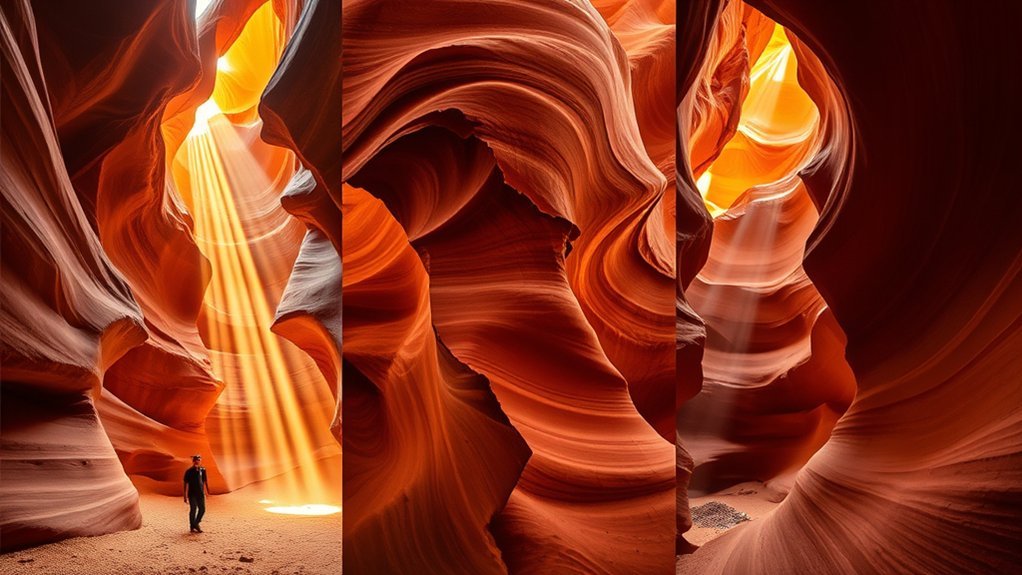
Which canyon fits your goals—iconic light beams, easier access, or fewer crowds? You’ll choose Upper Antelope Canyon if you want those famous light beams and easy walking; its 90-minute tours attract photographers and families alike. If you prefer more sunlight patterns and don’t mind stairs or ladders, Lower Antelope Canyon’s V-shaped passages offer a different, tighter experience on roughly one-hour tours. For solitude and a budget-friendly option, Canyon X gives you two quieter canyons with 90-minute excursions, fewer visitors per day, and tours run by Taadidiin Tours. All three require guided access by authorized Navajo guides and advance reservations, so plan which vibe you want—photography, accessibility, or calm—and book the appropriate tours accordingly.
Tour Logistics, Rules, and Costs
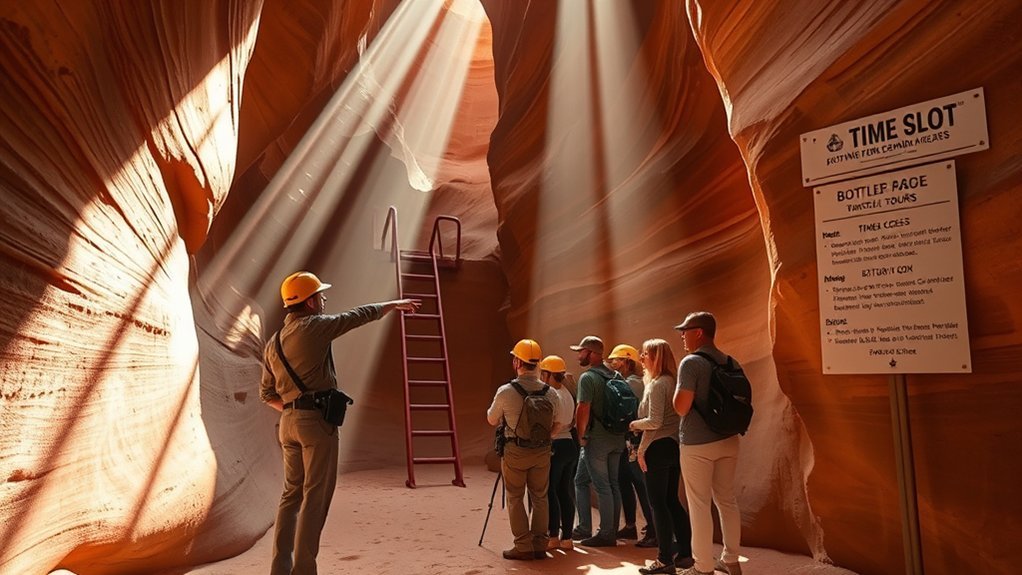
Plan carefully before you go: all access to Antelope Canyon requires an authorized Navajo guide, tours fill fast (especially March–October), and reservations are strongly recommended. You’ll follow strict tour logistics on Navajo land—check-in, briefings, and sometimes shuttle rides to the slot. Expect an $8 entry fee usually bundled into tour prices.
- Book a guided tour in advance; slots sell out during peak season.
- Arrive 15–30 minutes early for check-in and transport to the canyon.
- Upper Antelope Canyon tours: $50–$90 for about 90 minutes.
- Lower Antelope Canyon tours: $40–$80, depending on options.
Respect guide instructions, tribal rules, and cultural protocols; they protect both visitors and the fragile canyon you’ve come to see.
Nearby Sights, Accommodations, and Practical Tips
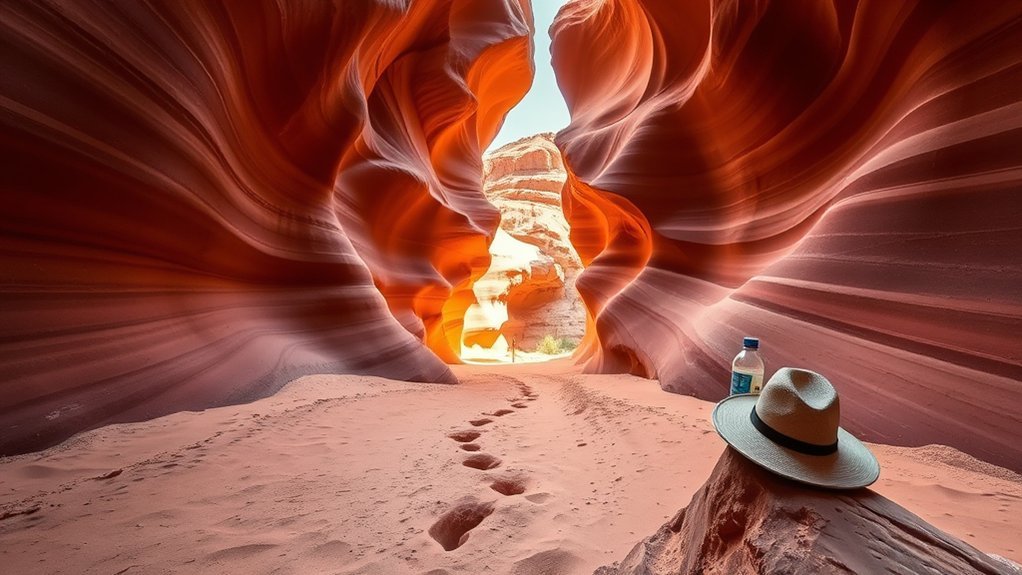
When you’re done exploring Antelope Canyon, don’t rush back to town—nearby sights like Horseshoe Bend, Glen Canyon Dam, and Navajo Bridge offer dramatic viewpoints and easy add-ons to your day, and many visitors pair a canyon tour with one or two of these short stops. You’ll find Horseshoe Bend’s rim an iconic sunrise or sunset scene; Glen Canyon Dam and Navajo Bridge give powerful contrasts of engineering and riverine landscape. For accommodations in Page, Hampton Inn and Suites offers clean rooms and free breakfast, while The Bears Den B&B provides a cozy stay with private baths. Practical tips: tours run 90–120 minutes, book Navajo guides early, wear closed-toe shoes, layer clothing, bring sunscreen and a water bottle.
Frequently Asked Questions
Do I Need a Tour Guide to Visit Antelope Canyon?
Yes—you must join authorized tours; tour guide options are mandatory, no self guided tours allowed. Guides give photography tips, safety considerations, explain canyon regulations, manage group sizes, and handle booking logistics for a smooth visit.
How Much Time Do You Need at Antelope Canyon?
You’ll need about two to five hours total, depending on tours and travel. Photography tips, best time, weather considerations, safety precautions, accessibility options, nearby attractions and visitor reviews help you plan efficiently and enjoy the visit.
How Much Do You Tip a Tour Guide at Antelope Canyon?
Tip about 15–20% for tour guide etiquette; adjust for group size impact or private tours, tip more for photography tips, exceptional tour guide qualifications, and follow local customs—cash’s best, and don’t hesitate to be generous.
What Month Is Best to Visit Antelope Canyon?
Mid-March to early October is the best season: you’ll enjoy ideal weather conditions and photography tips for light beams, though crowd levels and ticket prices rise; check accessibility options, nearby local attractions, and consider shoulder months for balance.
Conclusion
You’ve seen why Antelope Canyon feels like nature’s own cathedral — light pours through sandstone like stained glass, and passageways curl like a whispered secret. Plan ahead, pick the section that fits your sense of adventure, and follow your Navajo guide’s lead to protect this fragile masterpiece. Dress for the dust, bring a camera, and leave only footprints. When you step out, you’ll carry a slice of desert sunlight in your memory.

